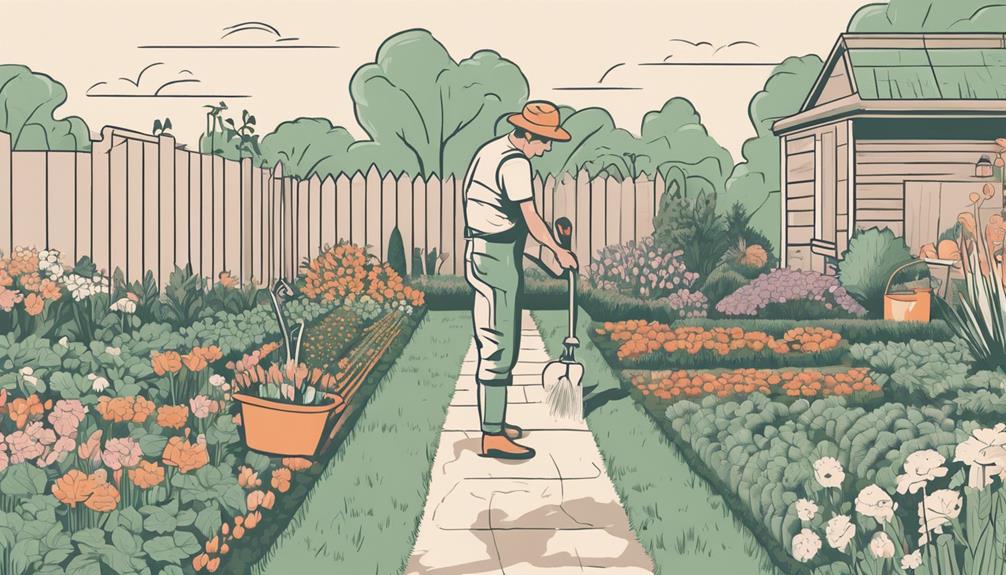How To Become More Self-Sufficient Without Starting a Full-Blown Farm…
Want to start preserving your harvest, making your own soap, or building a backyard root cellar — but not sure where to begin? “Homesteading Advice” gives you instant lifetime access to 35+ practical homesteading books on food preservation, veggie gardening, DIY natural cleaning products (save over $250 per year with this skill alone), brewing, off-grid energy, and a whole lot more…
Click Here To Check It Out Now!
“I’ve just moved into a lovely house in the suburbs with a sizable backyard, and I’m super excited to start my own backyard farm. However, I’ve heard that installing a sprinkler system can be quite a task, and I’m not exactly sure where to start. Could you provide a detailed guide on how to install one, including any necessary materials, tools, and steps I should follow? Thanks so much for your help!” thanks, David, Melbourne, Australia.
How Do I Install A Sprinkler System?
Starting a backyard farm is a fantastic way to grow your own fresh produce, David, but keeping everything well-watered is essential. A sprinkler system can save you time and ensure your plants receive consistent moisture. Follow this detailed guide to install a sprinkler system that will keep your backyard farm thriving.
Planning and Design
Before picking up any tools, proper planning is key. Here’s how to start:
1. Assess Your Water Source: Determine water pressure and flow rate. You can use a pressure gauge and a bucket to measure these. This will help you choose the appropriate sprinkler heads and number.
2. Map Your Yard: Create a scaled drawing of your garden. Identify all areas that need watering, including garden beds, lawn, and flowers. Mark down any obstacles like trees or buildings.
3. Choose Sprinkler Heads: Select the right sprinkler heads based on your garden types. For example, rotary sprinklers are great for lawns, while drip irrigation works well for vegetable beds.
4. Layout Pipes and Sprinklers: Plan the main water line and branch lines to ensure that the water reaches every area of your garden.
Materials and Tools
Collecting all necessary tools and materials beforehand makes the installation smooth. You will need:
- PVC or poly piping appropriate for your water system
- PVC cement and primer (if using PVC)
- Sprinkler heads
- Pipe cutter
- Shovel or trencher
- Backflow preventer
- Timer/controller
- Fittings (tees, elbows, couplings)
- Teflon tape
- Pressure regulators and filters (especially for drip systems)
Step-by-Step Installation
Now you’re ready to get your hands dirty!
Step 1: Mark the Sprinkler Locations
Using stakes or flags, mark where each sprinkler head will be located according to your plan. Make sure they have overlapping coverage for uniform watering.
Step 2: Dig Trenches
Dig trenches for the main line and branch lines. They need to be deep enough to protect the pipes from potential damage. Typically, 6-12 inches deep is standard.
Step 3: Lay the Pipes
If using PVC pipes, connect them with PVC cement and primer. For poly pipes, use the appropriate fittings. Begin from the water source and work outward, connecting one section at a time.
Step 4: Install Sprinkler Heads
Attach risers to the pipes where each sprinkler head will go. Screw the sprinkler heads onto the risers. Ensure they are at the correct height after the soil is replaced.
Step 5: Install the Backflow Preventer
This is crucial to prevent contamination of your household water supply. Install it according to the manufacturer’s instructions at the point where the sprinkler system connects to the main water supply.
Step 6: Set Up a Timer
Attach a timer or controller to your system to automate the watering schedule. Position the controller where it’s easy to access for programming and adjustments.
Testing and Adjustments
Once everything is in place, it’s time to test your new sprinkler system.
1. Test for Leaks: Turn on the water and check all connections. Look for any leaks and seal them with Teflon tape or re-cement joints if needed.
2. Adjust Sprinkler Heads: Ensure each head is covering the intended area. Adjust angles and spray patterns as needed.
3. Set the Timer: Program your watering schedule. Consider local weather patterns and plant needs when setting these times. For example, early morning watering reduces evaporation and helps plants absorb the most water.
Maintenance Tips
Regular maintenance keeps your sprinkler system running smoothly:
- Inspect Regularly: Check for leaks, clogged nozzles, and proper head alignment monthly.
- Seasonal Adjustments: Adjust the timer during different seasons to accommodate changing water needs.
- Winterization: If you live in a region with freezing temperatures, winterize your system to prevent pipe damage. Drain all water and blow out the lines with compressed air.
Why a Sprinkler System Is Important
A properly installed sprinkler system offers many benefits:
Saves Time: Instead of manually watering your garden, a timed system ensures consistent watering without the hassle.
Conserves Water: Automatic systems are efficient, reducing water waste compared to manual watering methods, especially when combined with a rain sensor.
Promotes Plant Health: Regular, even watering helps plants grow steadily and healthily.
Increase Property Value: A well-maintained garden with a professional sprinkler system can increase the aesthetic appeal and value of your property.
Common Mistakes to Avoid
Here are a few pitfalls to watch out for during the installation process:
- Incorrect Sprinkler Placement: Ensure heads have overlapping coverage. Any missed spot will result in dry patches.
- Ignoring Water Pressure: Failing to account for water pressure can lead to inefficient watering. Always measure your pressure first.
- Poor Trenching: Pipes that are too shallow may get damaged easily. Ensure your trenches are deep enough.
Final Thoughts…
David, thanks for your question. Installing a sprinkler system takes some effort, but it’s a worthwhile investment for your backyard farm. With proper planning, the right materials, and regular maintenance, your garden will flourish, saving you time and water. Enjoy your growing oasis and the abundant harvests to come! Happy gardening!

